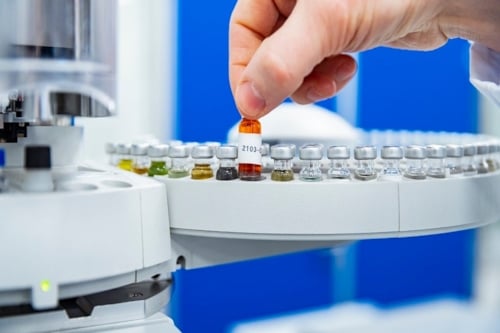What exactly is green gas?
Green gas is gaining popularity as a sustainable alternative to fossil natural gas. It helps reduce CO₂ emissions and contributes to the energy transition. But what is it exactly? And how does it differ from biogas? In this article, we will guide you through the basics of green gas, its injection into the natural gas grid and what is involved in the process.
The difference between green gas and biogas
Biogas is produced through the fermentation of organic materials such as manure, sludge or food waste. However, this gas still contains impurities and has a relatively low methane content. To make it suitable for our natural gas network, it must be upgraded. This means removing sulfur and CO₂ and increasing the methane content. Only then is it classified as green gas. Green gas has the same quality as natural gas and can be used directly in existing pipelines, boilers and stoves.
Injection into the natural gas grid
Because green gas has the same properties as natural gas, it can be injected, or ‘fed’, into the existing gas grid without major modifications. Green gas producers supply it to a local gas network, where it is blended with fossil natural gas. The amount of injected green gas varies by region and depends on production capacity.
To ensure the quality of the gas, strict quality standards are applied to the injection of green gas into the natural gas grid. This guarantees that network operators and consumers receive gas of equivalent quality to natural gas.
Getting started with biomethane?
Want to know more about injecting biomethane? Discover the details in our step-by-step guide ‘How to start as a biomethane injector’.
Key factors in green gas injection
Several factors influence the production and injection of green gas:
- Feedstock: The quality and availability of organic material impact production capacity.
- Upgrading facilities: Biogas must be upgraded to natural gas quality before being injected into the grid as green gas.
- Network capacity: The infrastructure must be suitable for the safe transportation and distribution of green gas.
- Quality standards: To ensure compliance with regulations, both mandatory and voluntary inspections apply.
A promising alternative to natural gas
Green gas offers a more sustainable alternative to natural gas and contributes to the energy transition. It also presents interesting opportunities for the agricultural sector, waste processors and water authorities to convert waste into renewable energy.
Want to learn more about green gas?
Our experts have in-depth knowledge of green gas and are happy to assist you. Discover more in Kiwa's Biomethane Guide.
Gas analysis by ISO-certified laboratory
If your organization works with gases, it may be important to know their calorific value or Wobbe Index. In addition, it's crucial that the gas does not contain harmful trace components. At Kiwa, you can rely on expert analysis of a wide range of gas properties: volume, quality, (main) components, higher hydrocarbons, aromatic hydrocarbons, halogenated hydrocarbons, sulfur compounds (such as H₂S), siloxanes and THT odorization.

Gas imaging camera: Quick and efficient detection of leaks in bio methane or biogas installations
Leaks in bio methane or biogas installations can’t only lead to dangerous situations but also pose a threat to the environment. Additionally, leaking gas represents a direct financial loss. That’s why it is crucial to detect and repair leaks and vulnerable areas in green gas and biogas systems as quickly as possible. Kiwa can assist with this by conducting camera inspections using an advanced gas imaging camera.

Analysis odorant in natural gas, hydrogen gas and other gases
Natural gas, hydrogen gas and many other gases are naturally odorless. This can cause dangerous situations, for example if a leak or other incident occurs. Gases that are distributed via the Dutch gas network must therefore be scented with a so-called odorant.

Want to know more on the energy transition?
Our experts have deep knowledge and experience in specific fields. Questions, dilemmas or just curious?



